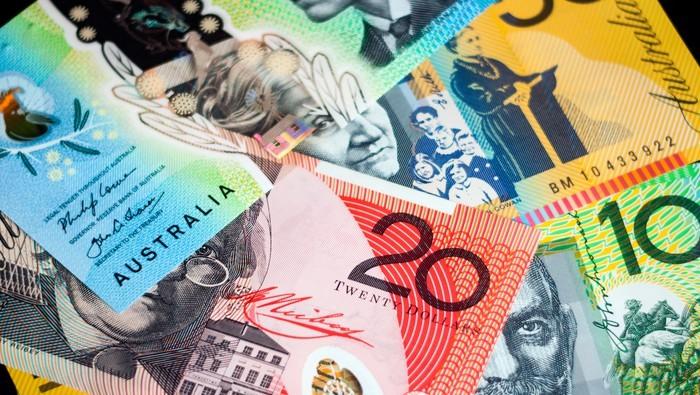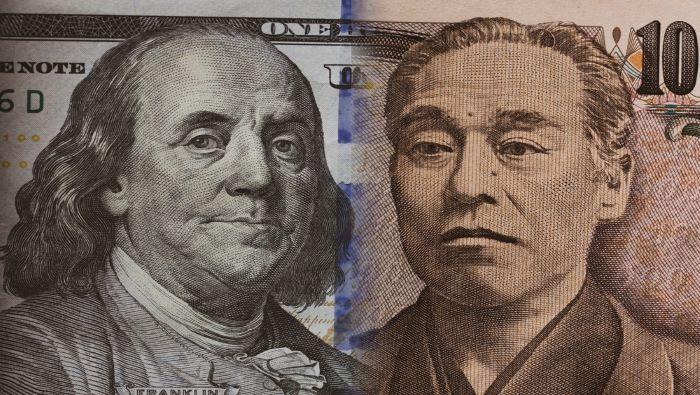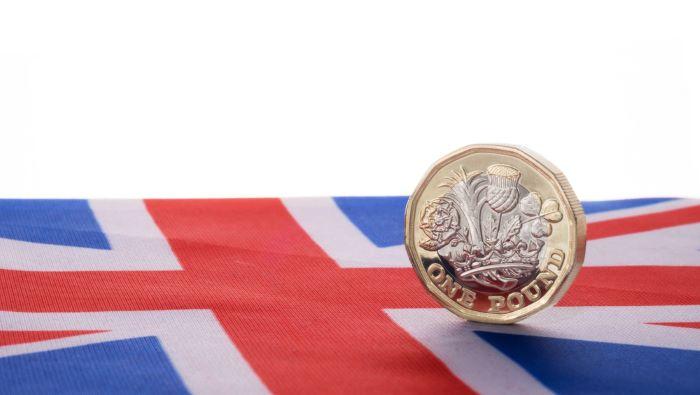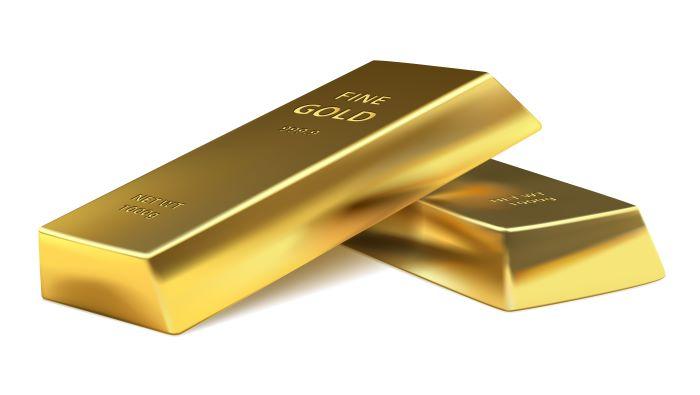2024-07-08 12:00
Australian Dollar (AUD/USD) Latest Analysis and Charts AUD/USD has surged thanks to an upside inflation surprise in Australia Local borrowing costs will probably stay ‘higher for longer’ On current thinking, US rates are likely to fall first The Australian Dollar was a little lower on Monday but remains close to its 2024 peak thanks to some solid and enduring monetary policy support. While most major central banks are either already cutting rates, or within sight of doing so, persistently high inflation has meant that the Reserve Bank of Australia will likely be among the very last to join that party. Indeed, it’s not thought impossible that Australian rates could rise again this year following the release of May’s inflation numbers. They showed a surprise climb for consumer prices back above the 4% level- a six-month high. However, even if rates merely stay on hold at current levels into year-end. that will leave Australian yields and the Australian Dollar looking attractive. Monday’s economic data were sparse but interesting, with home loans and investment lending for homes both revealed to have fallen in May. Tuesday will bring the monthly snapshot of consumer confidence from Australian banking major Westpac. The last look, for June, found Aussies still gloomy but a little less so than they were. More of the same will underline the RBA’s problem. Sullen consumers hardly suggest an economy crying out for the higher borrowing costs strong inflation could force on them. After that focus will cross the Pacific to the United States where Federal Reserve Chair Jerome Powell is due on Capitol Hill for his regular Congressional testimony. Australian Dollar Technical Analysis Chart Compiled Using TradingView The Aussie has powered above its previous broad-range top in the last three sessions but doesn’t yet look especially comfortable there. Bulls have pushed it through what had been key resistance at the first Fibonacci retracement of AUD/USD’s rise to the peak of December 28, 2023 from the lows of October 25. That now comes in as near-term support at 0.67419. If as seems likely this level can’t hold then a slide back below 0.67133 into the previous range seems likely, with the pair likely to remain within that band through at least the Northern Hemisphere summer trading period. Further retracement support at 0.65704 looks very solid. Still, various longer-term uptrends remain very much in place, including that from mid-April this year. Even if Aussie bulls can’t force the pace back to last year’s peaks, there seems little reason to expect serious falls for the currency while the fundamental picture remains so supportive. --By David Cottle for DailyFX https://www.dailyfx.com/news/australian-dollar-returns-some-gains-but-stays-close-to-year-s-highs-20240708.html

2024-07-08 08:05
Euro (EUR/USD) Analysis and Charts French bond yields starting to move higher. Euro edges lower as markets wait for specifics. The French election resulted in a shock this weekend and left French financial markets vulnerable in the coming weeks. Many anticipated a strong showing from the far-right National Rally (RN) party, however, a left-wing coalition, the New Popular Front made significant gains and gained the most seats in the National Assembly. President Emmanuel Macron's centrist alliance, Ensemble, underperformed expectations but still beat the RN into second place. Projected seat distribution in the 577-seat French National Assembly is: New Popular Front (left coalition): 182 seats Ensemble (Macron's centrists): 168 seats National Rally (far-right) and allies: 143 seats The Republicans (conservatives): 60 seats The result has led to a hung parliament, meaning no single party or coalition has an outright majority. This hung parliament will likely lead to challenges in governance, as Macron's party will need to form alliances or negotiate with other parties to pass legislation. The leader of the New Popular Front, Jean-Luc Melenchon, has already said that the French prime minister must resign and that the NFP be given the mandate to govern. This political instability will leave French financial markets, and the single currency, vulnerable in the weeks ahead. French asset markets are unchanged to marginally lower in early trade. The CAC 40 is trying to push higher, but further gains may be limited as traders wait for further news on the new government's composition. CAC 40 Daily Chart French borrowing costs remain elevated and may push higher still. New Popular Front leader Melenchon has already said that he will bring down the French pension age to 62, from 64, while he will also increase the minimum wage. Additional spending will need to be funded and French bond yields are set to move higher still. French 10-year Bond Yield The Euro is relatively calm post-election and is keeping hold of last week’s gains. The Euro is also benefitting from the US dollar weakness and a period of calm in the days ahead could see the single currency drift back towards 1.0900 against the US dollar. EUR/USD Daily Price Chart All charts using TradingView Retail trader data 36.57% of traders are net-long with the ratio of traders short to long at 1.73 to 1.The number of traders net-long is 9.45% lower than yesterday and 35.06% lower than last week, while the number of traders net-short is 5.37% higher than yesterday and 53.85% higher than last week. We typically take a contrarian view to crowd sentiment, and the fact traders are net-short suggests EUR/USD prices may continue to rise. Traders are further net-short than yesterday and last week, and the combination of current sentiment and recent changes gives us a stronger EUR/USD-bullish contrarian trading bias. What is your view on the EURO – bullish or bearish?? You can let us know via the form at the end of this piece or contact the author via Twitter @nickcawley1. https://www.dailyfx.com/news/euro-eur-usd-on-edge-after-surprise-french-election-result-20240708.html

2024-07-07 23:00
Q2 Market Recap: Yen at 30-Year Low The Japanese Yen will stagger into the new calendar quarter at lows not seen against the United States Dollar for thirty years and more. Given that, it’s tempting to suggest that the currency can have nowhere much to go but higher in the months ahead, but, sadly for that rarest of creatures, the Yen bull, that’s not the case. The reason for the Japanese unit’s weakness is easy enough to spot. With the Bank of Japan’s base rate hovering between zero and just 0.1% the Yen offers yields which are simply unattractive compared to those of major, ‘risk free’ peers. US ten-year benchmark yields are 4.3%, for example, but you can take your pick really. Everyone offers you better returns than Japan. This has been the case for a very long time, of course. Japan spent decades pursuing a policy of ultra-loose monetary settings in a desperate attempt to stimulate some domestic demand and pricing power. What’s a bit different now is that the country officially exited this policy back in March. Back then it raised interest rates for the first time in a scarcely believable seventeen years. It also started to dismantle the other pillar of its extreme monetary largesse, the policy of controlling its own government yield curve via vast, targeted bond buying. Now this is Japan we’re talking about, and the process of monetary tightening was always going to be measured and gradual. The Yen was never going to become a tempting yield play overnight. Still, the authorities in Tokyo might feel slightly aggrieved that they got so little Yen support for their actions. The problem was that, when they moved back in March, it was still thought likely that US interest rates would be coming down soon, and that they’d keep falling. Things didn’t work out that way. US rates remain very high by recent standards, with the Federal Reserve still not sure that it’s got inflation quite where it wants it. Most other western central banks are in a similar bind; rates may indeed fall when they move at all, but they’re not moving yet. Weak Yen Isn’t All Bad For Japan This hasn’t been all bad news for Japan, of course. A weak Yen has seen tourists arrive in droves, eager to spend, and Japanese exports are surging away. However, that same weakness is making imports much more expensive, exacerbating cost-of-living worries, and threatening to strangle the very domestic demand which the authorities want. The Yen might get another interest rate rise early in the quarter, data permitting. This might serve to put something of a floor under it, at least, if no more than that. However, everything will really depend on what the Fed does. At present the market is betting on just one interest rate cut, possibly late in the year. If inflation wilts (as it may) the markets will scent more action and the Dollar will probably slide against everything, the Yen included. The risk must be, though, that US rates remain in ‘higher for longer’ mode throughout the quarter. This is all-but sure to mean even more Yen weakness even if the authorities in Tokyo act as best they can to slow it down. There are clear limits to their ability to do that, however. The BoJ spent over US$20 billion back in May on Yen buying ‘intervention’ to slow the Yen’s fall. It had some success, but the dominant uptrend remains very much in place. https://www.dailyfx.com/news/japanese-yen-q3-fundamental-forecast-yen-can-go-lower-yet-unless-us-rate-cut-hopes-revive-20240707.html

2024-07-07 08:00
British Pound Faces Challenges in Q3 The British Pound is under pressure going into the third quarter of the year as interest rate cuts finally heave into view, while the UK general election is set to cause a bout of volatility, and likely Sterling weakness, with the incumbent Conservative Party expected to poll its worst set of results in decades. Current polls suggest that Labour will win the July 4th election by a landslide, and with their spending plan still unclear, investors may shun Sterling, and Sterling-denominated assets, until the economic picture is clearer. UK Inflation: Target Reached, but Difficulties Remain The United Kingdom reached a significant economic milestone in May as inflation data revealed a return to the Bank of England's (BoE) target rate. For the first time in nearly three years, the UK's headline inflation rate dropped to 2%, aligning with the BoE's long-standing target. This development marks a notable turning point in the country's fight against elevated price pressures. Core inflation - ex food and energy - also fell from 3.9% to 3.5%, while services inflation fell from 5.9% to 5.7%, a move in the right direction but still worryingly high for the BoE. UK Headline Inflation (Y/Y) Source: Trading Economics/ONS The Bank of England has been vocal over the last few months that inflation would hit target around the start of H2. However, the BoE also warned recently that CPI inflation is expected to rise slightly in the second half of the year, ’as declines in energy prices last year fall out of the annual comparison’. With the BoE remaining data dependant, the UK central bank may want to see further evidence of inflation, especially Core and services inflation, falling further before it initiates a round of interest rate cuts. UK Interest Rate Outlook: Projected Path and Market Expectations The trajectory for UK interest rates continues to trend downward, with the timing of the initial 25 basis point reduction emerging as a key factor influencing Sterling's performance in the coming quarter. Current market assessments provide valuable insights into potential rate adjustments and can affect the value of Sterling against arrange of currencies. August 1st BoE Meeting - Financial markets currently price in a 49% probability of a rate cut at this session. This balanced outlook suggests significant uncertainty surrounding the Bank of England's immediate intentions. September 19th BoE Meeting - Should rates remain unchanged in August, market indicators point to a near-certainty of a downward adjustment at the September meeting: December 18th BoE Meeting - The market anticipates a high likelihood of a second-rate reduction before year-end with the probability of an additional cut at 90%. Long-Term BoE Projections - Looking further ahead, market expectations suggest a continued easing cycle with a forecast Bank Rate of 4% at the end of 2025. Implies rates & basis points Source: Refinitiv Eikon UK growth stalled in April after rising in each of the prior three months, again highlighting the tricky balance that the UK central bank has when looking at easing monetary policy. The UK economy expanded by just 0.1% in 2023, its weakest annual growth since 2009, and while growth in the first three months of 2024 beat market expectations, April’s figure is disappointing. UK growth expectations have been upgraded since the beginning of the year with various bodies projecting growth of between 0.6% and 1.0% in 2024, although these may be affected by the upcoming UK general election. UK growth: May – Nov 2024 Source: Trading Economics/ONS https://www.dailyfx.com/news/british-pound-q3-fundamental-forecast-time-to-start-cutting-interest-rates-20240707.html

2024-07-06 18:00
Gold Q3 Fundamental Forecast Gold is currently trading around $1,900 per ounce, approximately $100 higher than its opening level in the second quarter of 2024, having reached a new all-time high in mid-May. The global interest rate environment has seen anticipated rate cuts fail to materialize, particularly in the United States, as inflation persists above the forecasts of various central banks. Central bank purchases, especially from China, have shifted the supply-demand balance in favour of higher prices. However, any pullback in demand could leave gold vulnerable to downside pressure. Additionally, the political risk premium that had supported gold has diminished, although it may resurface at any moment, especially with several high-profile elections on the horizon. Gold traders will have numerous factors to monitor closely in the third quarter. Delays in US Interest Rate Cuts At the beginning of 2024, financial markets were anticipating between four and five 25-basis-point rate cuts by the Federal Reserve, with the first move expected in the second quarter. These forecasts have been revised significantly lower over the past few months, currently projecting one or, more likely, two rate cuts starting at the November Federal Open Market Committee (FOMC) meeting. This aligns with the latest FOMC year-end projections. FOMC June Dot Plot Projections Source: LSEG DataStream With US interest rates remaining elevated, the opportunity cost of holding non-yielding assets like gold increases. Interest-bearing investments such as bonds become relatively more attractive because they can generate income through interest payments. As a result, investors may choose to shift their capital away from gold and toward assets that can provide a yield or return based on the prevailing interest rates. At the beginning of 2024, interest-rate sensitive US 2-year Treasuries traded with a yield around 4.25% as a series of rate predictions were priced in. In May this year, the same Treasuries offered a yield more than 5%, pulling gold lower. The longer US Treasury yields remain elevated, the more they will weigh on the price of gold. US Treasury 2-Year Yield Chart Source: TradingView, Prepared by Nicholas Cawley Central Bank Demand for Gold In 2023, central banks added 1,037 tonnes of gold – the second highest annual purchase in history – following a record high of 1,082 tonnes in 2022, according to the World Gold Council. According to their 2024 Central Bank Gold Reserves survey - conducted between 19 February and 30 April 2024 with a total of 70 responses - 29% of central banks respondents intend to increase their gold reserves in the next twelve months, ‘the highest level we have observed since we began this survey in 2018.’ The survey noted that the planned purchases are motivated ‘by a desire to rebalance to a more preferred strategic level of gold holdings, domestic gold production, and financial market concerns including higher crisis risks and rising inflation.’ These planned purchases should underpin the price of gold in the medium-term, counterbalancing the higher-for-longer interest rate backdrop. Chart 4: How do you expect your institution’s gold reserves to change over the next 12 months? Source: World Gold Council Potential Market Impact of Upcoming Elections The second half of 2024 will witness a series of significant general elections across the globe, including a potential rematch between incumbent President Joe Biden and former President Donald Trump in the United States. This election is expected to be highly contentious, and the lead-up to the November 5th vote is likely to contribute to increased market volatility. The previous presidential election was closely contested, with Donald Trump alleging voter fraud as the reason for his loss, while both parties this year have expressed concerns about foreign interference and media bias. Monitoring the events surrounding this year's election will be crucial. In addition to the U.S. election, snap elections have been called in France and the United Kingdom. In the U.K., the Labour Party is poised to assume control of 10 Downing Street for the first time in 14 years, while in France, the far-right is expected to gain power after making significant gains in the recent European elections. Geopolitical Risks and Safe-Haven Demand Beyond general elections, ongoing global conflicts in Ukraine, Gaza, and the broader Middle East continue to pose risks. Each of these conflicts has the potential to escalate at any time, potentially increasing demand for gold as a safe-haven asset. https://www.dailyfx.com/news/gold-q3-fundamental-forecast-interest-rates-central-bank-demand-and-risk-20240706.html

2024-07-06 03:00
Crude Oil Q3 Fundamental Outlook Benchmark crude oil prices have been quite rangebound in the past quarter, as indeed they’ve arguably been since at least late 2022. Will the coming three months see any decisive change? Well, that’s likely to depend quite a lot on whether there’s any sign that demand can sustainably pick up to match what looks like very ample and increasing supply. So far, those signs are hard to spot. Viewed at through the lens of likely global monetary policy trends, a demand pickup seems unlikely. For sure oil prices have been quite resilient to the disappointment that has come with the re-pricing of when interest rates might start to fall in the United States and, by extension, elsewhere. Recall that, when 2024 got under way, markets were expecting multiple rate cuts by now. However, inflation decided not to play ball and hasn’t relaxed its grip as hoped, although it is trending in the right direction. Still, investors will probably be relieved to get just one reduction out of the Federal Reserve by year-end. The calculus runs that lower rates stimulate economic activity which in turn means higher demand for energy. So, the prospect of higher rates for longer has weighed on crude prices and will continue to. And this market like all others will remain fixed on inflation numbers out of the major industrialized countries, the US in particular. Traditional Producers Tread a Fine Line Meanwhile the Organization of Petroleum Exporting Countries and its allies (the so-called ‘OPEC +’ group which includes among others Russia) is attempting to strike a balance between maintaining deep production cuts to support prices and placating members like the United Arab Emirates who’d like to pump more oil. A complex agreement struck earlier in June will see most cuts extended into 2025, but a so-called ‘voluntary’ proportion of those will start to be phased out from October. For example, this could see Saudi Arabia pumping some ten million barrels per day by the end of next year, from nine million now. That’s a modest increase relative to the estimated twelve million barrels or so the country could theoretically produce, but an increase nonetheless. Moreover OPEC+ accounts for a smaller proportion of global supplies than at any time since its 2016 inception, according to the Paris-based International Energy Authority. That body has forecast a ‘staggering’ glut of oil relative to demand by the end of this decade, a process it says is already under way. This is not an environment in which it’s easy to see crude prices gaining much, unless we also see signs that demand in major consumer nations is likely to pick up very strongly. At present we generally don’t. Admittedly the World Bank looks forward to more stable growth than its watchers have seen in the last three nervous years. But mere stability seems unlikely to bring about the supply/demand balance that would argue for higher oil prices, especially with major energy importers like China still struggling with much lower growth than markets have become used to. Sadly, conflict in both the Middle East and Ukraine seems likely to remain an underpinning for oil prices this quarter. Durable ceasefires between Israel and Hamas and between Moscow and Kyiv remain elusive. The US crude benchmark has spent most of the last quarter between $76 and $84. That broad band could well endure into the next three months unless we see some solid evidence that interest rates might come down sooner than the markets now expect. Are you new to commodities trading? The team at DailyFX has produced a comprehensive guide to help you understand the key fundamentals of the oil market and accelerate your learning: https://www.dailyfx.com/news/crude-oil-q3-fundamental-forecast-supply-looks-solid-but-what-about-demand-20240706.html
